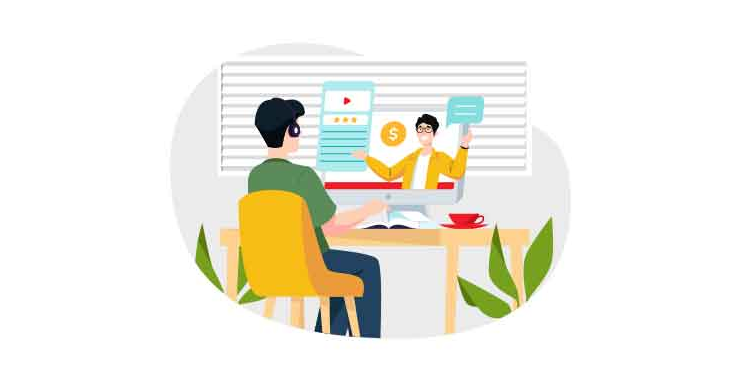1. Share the news early and transparently: Inform employees about potential layoffs as soon as possible to give them time to prepare and look for other opportunities, maintaining transparency throughout the process.
2. Communicate layoffs sensitively and personally: To show respect and avoid sending negative signals to all employees, deliver the news in a one-on-one setting rather than via email or group announcements.
3. Provide honest reasons and emotional support: Clearly explain the rationale behind the layoffs and offer emotional support, potentially using professional counselors to reduce stress and anxiety for affected employees.
4. Offer outplacement support: Help employees find new job opportunities, provide career guidance, and support skill enhancement, demonstrating the organization’s continued care for their well-being.
As the recession sets in, organizations worldwide are laying off a large number of employees. This comprehensive guide to managing layoffs should be helpful to organizations in this context.
Layoffs are quite challenging and stressful for the employees. Hence, it is advisable that organizations handle the process in the right manner.
The current global recession is forcing businesses to scale back operations due to declining demand for most products and services.

With diminishing revenues and poor prospects, most organizations struggle to stay afloat during these challenging times.
This has led organizations to adopt harsh cost-cutting measures.
Organizations often downsize the workforce, which is one of the most common steps.
The decision to lay off even a small percentage of their workforce can result in considerable savings for the organization and help it stay afloat longer.
The decision to lay off employees is often challenging and highly traumatic for them.
Hence, handling it in the right manner is extremely important.
Sadly, there are many recent examples of organizations adopting a casual and uncaring approach to handling this compassionate matter.

They seem to overlook that this attitude is likely to cause severe financial, emotional, and mental distress to the employees.
Moreover, if handled improperly, it can cause a major dent in their goodwill as an employer and impact their recruitment efforts once the economy revives.
Hence, organizations need to be more empathetic in managing layoffs.
When it comes to managing layoffs, there is no single method that seems to be perfect.
Every organization needs to develop its strategy to handle this sensitive issue in a manner that makes it less stressful and demoralizing for everyone involved.
Certain aspects of managing layoffs are common across all organizations.
The following comprehensive guide to managing layoffs discusses five of these most essential aspects:


Organizations considering layoffs must share the news with their workforce immediately.
Rather than waiting until the last minute, organizations should inform them as soon as possible.
It provides employees with sufficient time to explore alternative options outside the organization in the event of a layoff.
Organizations should also ensure that they are as transparent as possible with their employees about the process.

Once the organization has decided to lay off an employee, the concerned manager is responsible for personally communicating the news to that employee.
It is far better for the management to communicate the news to the employee on a one-to-one basis rather than in a group or over email or text message.
Such an action is not just highly insensitive but also rude.
It sends out wrong signals to the outgoing employees and those retained.

The employees would likely want to know the rationale behind the organization’s decision to let them go.
The management should articulate the reasons for layoffs directly and honestly.
It helps maintain the sense of respect and trust that employees have for the organization to some extent.
When management avoids answering such questions or provides vague responses, it loses credibility in the eyes of the employees.

Communicating the news of layoffs can cause much stress and anxiety to the employees.
It is especially true for employees with a long history of association with the organization.
Such emotional support and guidance to the employees offered by the organization can go a long way in reducing their levels of anguish and stress.
The organization could even utilize the services of a professional counselor for this purpose.
Organizations can even ensure that employees are re-hired once the business prospects improve.

The practice of providing outplacement support gained popularity during the 2008-2009 economic recession.
Outplacement support can help employees get new jobs in similar profiles, offer them guidance about available options relevant to their skills, and experience, or even to help them enhance their skills to look for new opportunities.
Such initiatives can help assure employees that the organization still cares about them and is ready to support them even at this critical juncture.
Organizations need to minimize the impact of layoffs on their employees and for themselves – so they can maintain the respect, morale, and support of the remaining members of their workforce while making the situation less traumatic for the employees being laid off.

Lead author: Sagar Chaudhuri, the Co-Founder and CEO of HiFives. He is an HR Tech Evangelist with over 25 years of experience in both corporate and entrepreneurial settings. Previously, Sagar has held leadership roles with companies such as Genpact, Infosys, and ICICI Bank. He has an engineering degree from IIT Kharagpur and an MBA from IIM Lucknow. Connect on LinkedIn
To stay updated on the latest HiFives blogs, follow us on Twitter (@MyHiFives)